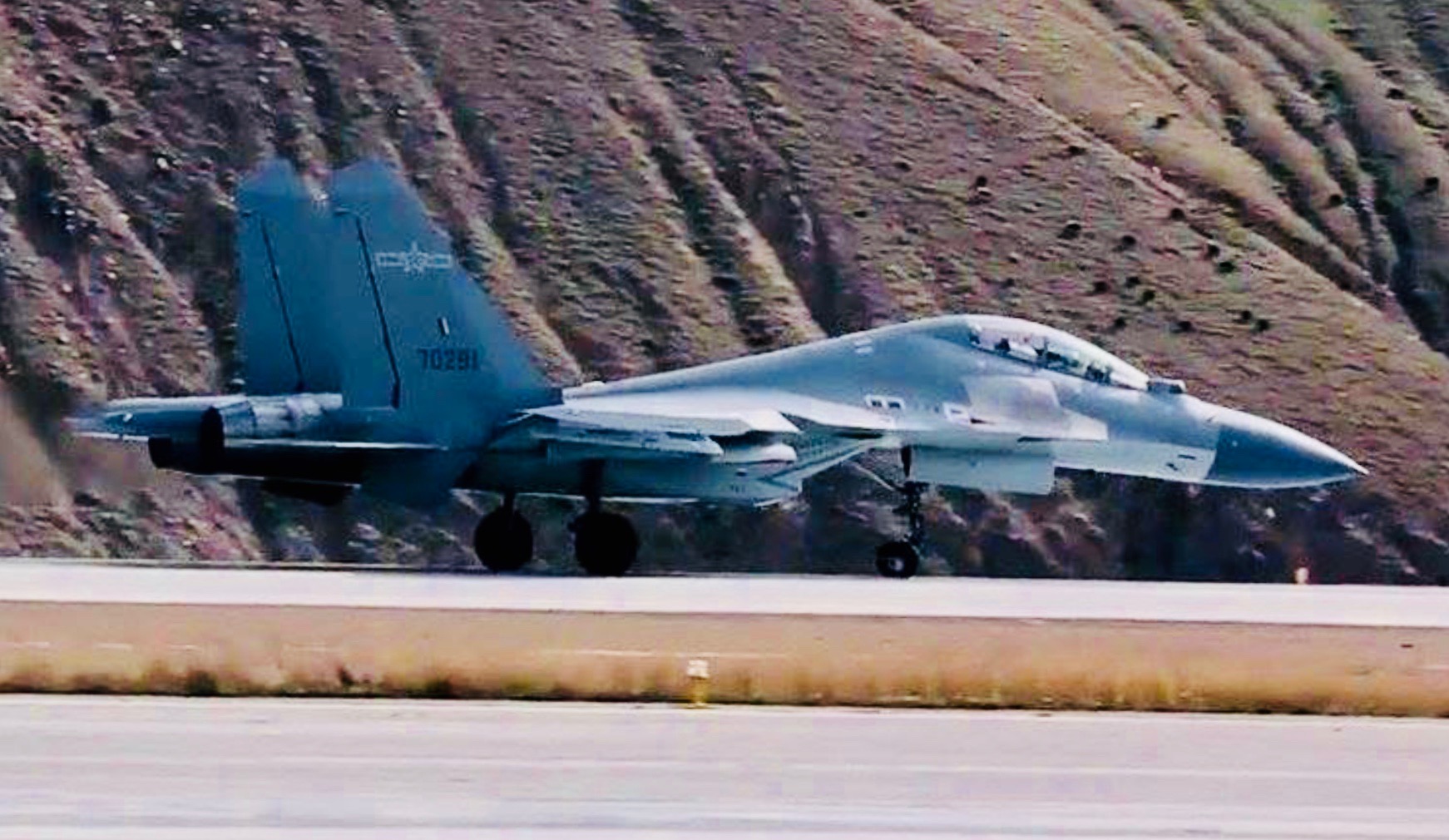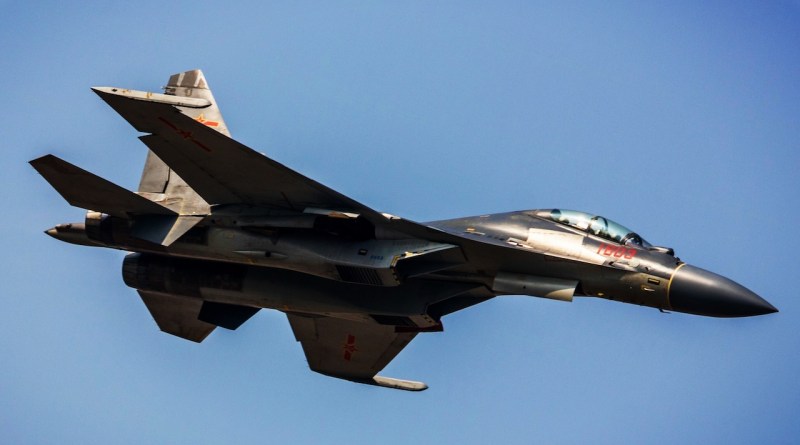People's Liberation Army Air Superiority Fighter
 New details have recently emerged regarding the Chinese People’s Liberation Army (PLA) Air Force contingent deployed to the strategically located southern province of Tibet, including the deployment of new J-16 strike fighters. The J-16 reportedly first entered service in the PLA Air Force in 2013, and is one of the most capable derivatives of the Su-27 Flanker air superiority airframe in the world. While best known for its strike capabilities, and its potential as an AWACS and tanker hunter at extreme ranges, the fighter is also highly capable in air to air combat. The deployment of the J-16 in considerable numbers this provides the PLA Air Force with a formidable complement to the J-11B - an older Flanker derivative specialised in air superiority.
New details have recently emerged regarding the Chinese People’s Liberation Army (PLA) Air Force contingent deployed to the strategically located southern province of Tibet, including the deployment of new J-16 strike fighters. The J-16 reportedly first entered service in the PLA Air Force in 2013, and is one of the most capable derivatives of the Su-27 Flanker air superiority airframe in the world. While best known for its strike capabilities, and its potential as an AWACS and tanker hunter at extreme ranges, the fighter is also highly capable in air to air combat. The deployment of the J-16 in considerable numbers this provides the PLA Air Force with a formidable complement to the J-11B - an older Flanker derivative specialised in air superiority. 
PLA Air Force J-16 Strike Fighter in Tibet
The deployment of the J-16 can be better understood when considering the capabilities of the Air Force of neighbouring India - which borders Tibet where the elite strike fighters have been deployed and has historically disputed Chinese sovereignty over its southern region. The mainstay of the Indian Air Force’s fighter fleet is the Su-30MKI, an advanced ‘4+ generation air superiority fighter also derived from the Flanker design. India has continued to modernise the Su-30MKI design with Russian assistance, and the country’s fleet continues to grow with well over 300 planned for frontline service. The PLA Air Force has a number of assets capable of matching, and in some cases comfortably surpassing, the capabilities of the Su-30MKI. The reasons for selecting the J-16 however closely reflect the priorities of the PLA and its intentions towards its southern neighbour.

PLA Air Force J-16 Strike Fighter
China’s Su-30MKK, while in many ways more capable than the MKI variant, was acquired primarily for a maritime strike role and to secure air superiority at sea. These fighters are largely being reserved for operations in the country’s coastal regions - particularly the South China Sea, for which they are ideally suited. China’s high end next generation air superiority fighters, Su-35 and J-20, have also been reserved primarily for deployment near the South China Sea and Taiwan Strait where the country perceives the greatest threat to its security. There they face the prospects of going head to head with elite Western fighters - namely the U.S. Air Force's F-22 Raptors. The deployment of cutting edge platforms such as the J-20 and Su-35 near India’s borders, to which Delhi has no similarly capable analogue, could be seen as an escalation - something which both parties have a strong interest in avoiding. The J-16 however, fielding similar capabilities though in many ways superior to the latest Su-30 variants, will ensure continued parity against the increasingly capable and fast growing Su-30MKI air superiority fleet without its deployment causing significant risk of escalation. The J-16 design continues to be modernised with new munitions, electronic warfare systems, and even stealth coatings making it a highly reliable platform in both strike and air to air roles to defend China's southern border. If pressed into an air to air role, the fighter’s sensors and high end munitions, with the PL-15 providing a far more advanced air to air capability than the R-77 used by India, will ensure that the PLA will retain qualitative parity and the very least - but most likely a considerable advantage.
No comments:
Post a Comment